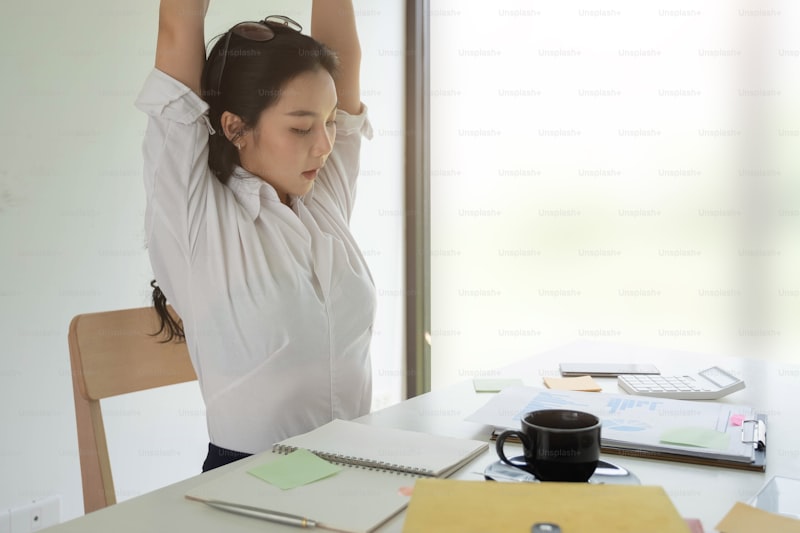One of the key components of yoga practice is its emphasis on mindfulness. By focusing on the present moment through controlled breathing and deliberate movement, practitioners can alleviate the grip of anxiety. Deep breathing techniques, such as diaphragmatic breathing or “belly breathing,” activate the body’s relaxation response, reducing heart rate and calming the nervous system.
Moreover, yoga asanas (postures) play a crucial role in releasing tension stored in the body. Poses like Child’s Pose (Balasana), Downward-Facing Dog (Adho Mukha Svanasana), and Corpse Pose (Shavasana) promote physical relaxation while fostering mental clarity. These postures improve circulation, stretch muscles, and increase flexibility, all of which contribute to a sense of well-being and reduced anxiety levels.
Beyond the physical benefits, yoga encourages self-awareness and introspection. Meditation, often integrated into yoga sessions, trains the mind to observe thoughts without judgment, promoting emotional resilience and a calm demeanor in stressful situations. Regular practice gradually rewires the brain’s response to stress, fostering a more balanced and centered approach to life’s challenges.
In essence, yoga serves as a sanctuary amidst the chaos, offering a pathway to manage stress and anxiety naturally. By harmonizing body and mind, it empowers individuals to cultivate inner peace, resilience, and a deeper connection to themselves. Whether practiced in a studio or at home, yoga’s transformative potential lies in its ability to nurture both physical vitality and mental serenity, making it an invaluable tool in the pursuit of holistic well-being.
Mastering Inner Peace: How Yoga Can Transform Stress and Anxiety
Yoga isn’t just about striking impressive poses or contorting your body into pretzel-like shapes. It’s a holistic approach to harmonizing the mind, body, and spirit. Through a combination of physical postures, controlled breathing, and meditation, yoga helps you tap into your inner strength and cultivate a sense of calm amidst the chaos.
Imagine your stress melting away with each deep, intentional breath. That’s the magic of yoga. By focusing on the present moment and letting go of worries about the past or future, you learn to navigate life’s challenges with a newfound sense of clarity and resilience.
But how exactly does yoga work its wonders on stress and anxiety? It’s all about the mind-body connection. When you practice yoga, you engage in movements that not only stretch and strengthen your muscles but also release tension stored in your body. This physical release is often accompanied by a mental release as well – letting go of negative thought patterns and embracing a more positive outlook.
Moreover, yoga encourages mindfulness – the practice of being fully present and aware of your thoughts, feelings, and sensations without judgment. This mindfulness spills over into your daily life, helping you respond to stressors more calmly and thoughtfully.
Think of yoga as a mental workout that trains your mind to be resilient and adaptive. Just like lifting weights builds muscle strength, yoga builds mental strength. It teaches you to breathe through discomfort, to find balance in challenging situations, and to nurture a deep sense of inner peace that stays with you long after you roll up your yoga mat.
Unlock Serenity: The Ultimate Guide to Yoga for Stress Relief
Are you looking to find peace amidst life’s hectic pace? Dive into the world of yoga—a powerful tool for stress relief that not only rejuvenates your body but also calms the mind. Yoga isn’t just about stretching; it’s a holistic practice that harmonizes physical postures with breathing exercises and meditation.
Imagine each yoga pose as a pathway to tranquility, guiding you through a journey of self-discovery and relaxation. From downward dog to child’s pose, each movement encourages mindfulness and releases tension stored in your muscles.
What makes yoga truly transformative is its ability to adapt to your needs. Whether you’re a beginner or seasoned practitioner, there’s a style that suits your pace and goals. Hatha yoga focuses on basic postures and breath control, perfect for those starting their yoga journey. For a more dynamic experience, Vinyasa flow synchronizes movement with breath, promoting a fluid and meditative state.
Beyond physical benefits, yoga significantly reduces stress by lowering cortisol levels, the hormone responsible for stress response. It promotes the production of endorphins, known as the ‘feel-good’ hormones, fostering a sense of well-being and positivity.
Picture your stress melting away with each yoga session, as you cultivate inner peace and resilience. The practice encourages you to let go of daily worries and embrace the present moment—a vital skill in today’s fast-paced world.
Furthermore, yoga isn’t confined to the mat; its principles can be integrated into daily life. Whether you’re at home, work, or outdoors, mindfulness techniques learned from yoga help you manage stress effectively.
Yoga isn’t just an exercise; it’s a lifestyle that promotes holistic well-being. Embrace its teachings, and you’ll unlock a path to serenity amidst life’s challenges. Discover the transformative power of yoga and embark on a journey towards inner peace today.
Yoga Beyond the Mat: Techniques for Calming Stress and Anxiety
In today’s fast-paced world, stress and anxiety have become all too common. Many people turn to yoga not just as a physical exercise, but as a holistic practice to calm their minds and find inner peace. Beyond the yoga mat lies a realm of techniques that can profoundly reduce stress and alleviate anxiety.
One of the core principles of yoga is mindfulness. This involves being fully present in the moment, aware of your thoughts and sensations without judgment. Mindfulness techniques practiced during yoga can extend into daily life, helping individuals manage stress triggers more effectively.

Breathing exercises, or pranayama, form another integral part of yoga practice. Techniques like deep belly breathing or alternate nostril breathing can quickly calm the nervous system, reducing the fight-or-flight response that often accompanies anxiety.

For those struggling with anxiety, restorative yoga offers a gentle approach. This style focuses on relaxation and rejuvenation, using props like bolsters and blankets to support the body in soothing, passive poses. It encourages deep relaxation, helping to release tension stored in the muscles and promote a sense of calm.
Yoga nidra, often referred to as “yogic sleep,” is another powerful tool for stress relief. This guided meditation practice systematically relaxes the body and mind, leading practitioners into a state of deep relaxation where profound healing can occur. Regular practice of yoga nidra can significantly reduce anxiety levels and improve overall well-being.
Beyond physical postures, yoga philosophy teaches valuable lessons in resilience and acceptance. Practicing non-attachment and letting go of expectations can help individuals navigate challenging situations with greater ease, reducing the impact of stress on both mind and body.
Yoga offers a multifaceted approach to calming stress and anxiety that extends far beyond the boundaries of the yoga mat. By integrating mindfulness, breathing techniques, restorative practices, and philosophical insights into daily life, individuals can cultivate inner peace and resilience in the face of life’s challenges.
From Chaos to Calm: Using Yoga to Manage Stress and Anxiety
Feeling overwhelmed by the chaos of daily life? Yoga might just be the tranquil oasis you need. In today’s fast-paced world, stress and anxiety have become all too common, affecting our mental and physical well-being. Enter yoga—a centuries-old practice that not only stretches your body but also calms the mind.
Yoga offers more than just physical exercise; it’s a holistic approach to finding inner peace amidst the whirlwind of modern life. Through a series of poses (asanas), breathing exercises (pranayama), and meditation techniques, yoga helps release tension stored in the body and soothes the mind. It’s like hitting the reset button for your entire being.
Imagine starting your day with a gentle yoga session, where each pose melts away stress like morning mist under the sun. The controlled breathing patterns in yoga, such as the calming Ujjayi breath, help regulate your nervous system, reducing the fight-or-flight response that often triggers anxiety.
What makes yoga particularly effective is its adaptability. Whether you’re a beginner or a seasoned practitioner, there’s a yoga style suited to your needs. From vigorous Vinyasa flows to restorative Yin yoga, each style offers unique benefits that contribute to mental clarity and emotional balance.
Beyond the physical benefits, yoga encourages mindfulness—a state of focused awareness on the present moment. This mindfulness practice teaches you to observe your thoughts without judgment, fostering resilience against stressors that may arise throughout your day.
Incorporating yoga into your routine isn’t just about exercise; it’s about cultivating a mindset of peace and resilience. By dedicating time to yoga, you’re investing in your mental health, nurturing a sanctuary of calm amidst life’s chaos.
This article is crafted to engage readers interested in managing stress and anxiety through yoga, highlighting its benefits in a conversational and informative tone.
Breathing Away Anxiety: Effective Yoga Practices You Must Try
Feeling overwhelmed by anxiety? Yoga might just be your answer. In today’s fast-paced world, stress and anxiety seem to lurk around every corner. But what if I told you there’s a natural, effective way to calm your mind and soothe your nerves?
Yoga isn’t just about striking poses; it’s a holistic practice that includes breathing exercises known as pranayama. These techniques focus on controlling the breath to quiet the mind and relax the body. One of the simplest yet most powerful techniques is deep belly breathing, also known as diaphragmatic breathing. By inhaling deeply through your nose, allowing your abdomen to expand fully, and exhaling slowly through your mouth, you can trigger a relaxation response that counters anxiety’s grip.
Another effective practice is alternate nostril breathing, or Nadi Shodhana. This technique involves breathing through one nostril at a time, which helps balance the left and right sides of the brain, promoting a sense of inner harmony and reducing anxiety levels.
For those seeking a more dynamic approach, consider incorporating flowing sequences like Sun Salutations (Surya Namaskar) into your routine. These sequences link breath with movement, fostering mindfulness and boosting serotonin levels, which can uplift mood and alleviate anxiety symptoms.

Yoga’s benefits extend beyond the mat. Regular practice can rewire the brain’s stress response system, making you more resilient to daily challenges. It’s like training a muscle; the more you practice, the stronger and more flexible your mind becomes in handling stress.
So, next time anxiety creeps in, consider rolling out your yoga mat instead of reaching for a quick fix. With dedication and practice, you’ll discover that the power to breathe away anxiety lies within you, waiting to be unlocked through the transformative practice of yoga.
Frequently Asked Questions
Can yoga help with both stress and anxiety at the same time?
Yoga can effectively alleviate both stress and anxiety simultaneously by combining physical postures, breathing exercises, and meditation. These practices help reduce cortisol levels, promote relaxation, and enhance overall mental well-being.
What are the best yoga poses for reducing stress and anxiety?
Discover the most effective yoga poses specifically tailored to reduce stress and anxiety. This FAQ provides clear guidance on the best poses that target relaxation and calmness, offering practical advice for achieving mental well-being through yoga.
How often should I practice yoga to alleviate stress and anxiety?
Discover how often to practice yoga for reducing stress and anxiety effectively.
Are there specific breathing exercises in yoga for calming anxiety?
Discover effective yoga breathing exercises designed to reduce anxiety and promote calmness. Learn techniques such as ‘pranayama’ to regulate breathing and ‘nadi shodhana’ to balance energy channels, aiding in anxiety relief through mindful breath control.
What are some beginner-friendly yoga routines for stress relief?
Discover simple yoga routines tailored for beginners that effectively reduce stress. These routines focus on gentle stretches, breathing exercises, and relaxation techniques, making them ideal for easing tension and promoting inner calm.


